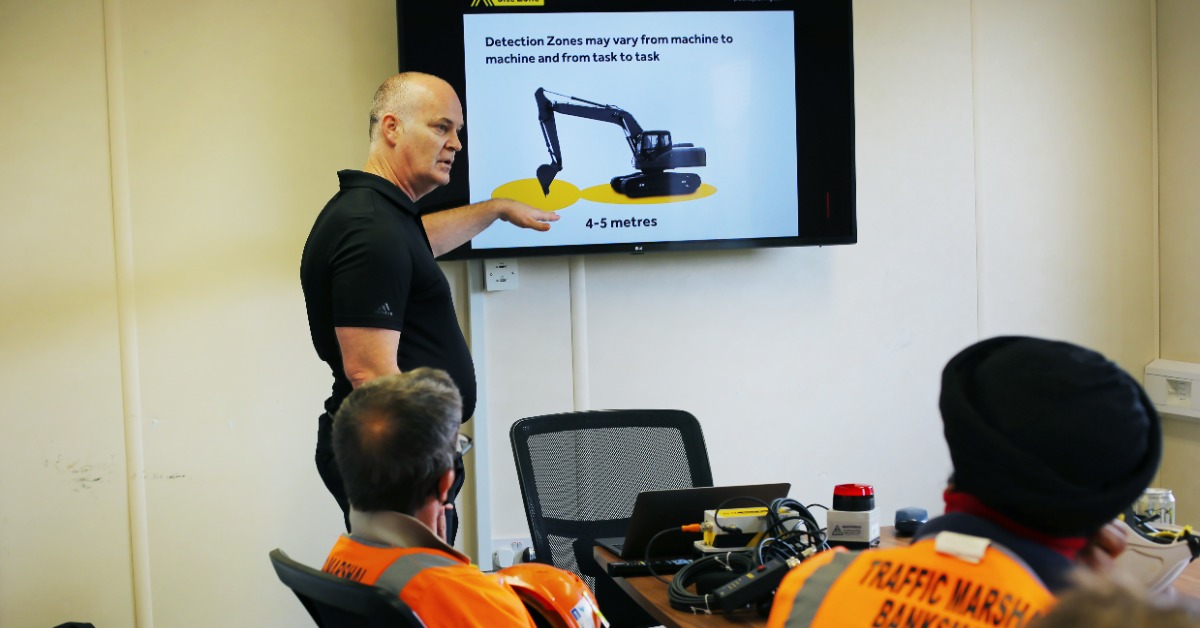I was pleased to see that among the most popular safety trends forecast for 2021 is wearable technology. Speaking from my own experience as a supplier of wearable safety tech, we’ve been able to see and hear from clients what a positive difference it makes to site safety.
COVID-19 remains the elephant in the room. It’s permeating everything in our lives, especially work-related safety. Managers have had to rethink procedures. And part of that re-assessment it seems, has been to turn to technology.
Physical distancing has certainly been a vital part of the workplace in the last 12 months – when we have been able to get to our offices and sites. For some industries, like waste and construction, working hasn’t stopped though. This is where wearables have shone as a real benefit.
It has been especially important to us at SiteZone Safety, as proximity warning systems are the core of our business, preventing collisions between workers and plant. But we never thought we’d be adapting our systems to keep workers apart from each other. However, to keep working teams ‘together’ and productive, we’ve had to figure out how to separate them. It’s rather surreal.
Going forward we cannot underestimate the growing importance of training. With all these changes in our occupational environments, there is no universal handbook to explain how we navigate the pandemic conditions. Whether it’s new safety practices for our own teams (speaking as a business owner), new management techniques, how to connect effectively with our clients, or adapt to how our clients have had to change their own working practices. The challenge is figuring out how we shoehorn all this together and continue to preserve our mutual business interests and operational capabilities as seamlessly possible.
Speaking for our team, there is a responsibility to ensure that our clients get the most out of our safety solutions. We can’t waste any time or resource on either side of the relationship. They must understand fully how our technology relates to their particular site requirements and apply them accordingly.
There needs to be continued diligence with executing site audits and risk assessments. The next step is to get buy-in from the client team. It’s essential to demonstrate how to use the safety technology that we supply, so they are benefitting. There’s no point just handing the tech over, and not making sure it’s being used to maximum efficiency. After all, lives are at stake if something goes wrong in the collision-risk universe. There must be training on new systems, and regular refreshers on older ones for full success.
The relationship between data capture and safety is going to play a bigger role in my opinion. At SiteZone Safety, we’ve spent a lot of energy developing tech that is reactive, proactive, and captures real time data. When you’ve got to make decisions about good safety practice, data narrows the margin for error, and plays a part in changing behaviours on site, because weaknesses are identified and action can be targeted.
We view our use of safety technology as a complement to tried and tested safety practices that are created from experience and expertise over time. It is entirely possible to create a complementary tech-based safety solution that works to enhance existing practices. Technology enables detection, but more importantly, prevention.
Sharing the value of safety solutions is also a key road to success. Everyone needs to be invested in what we’re trying to achieve and the realistic possibilities. Our clients: the directors, managers, site managers, and operatives must see what they’re getting out of our offering. And it’s down to us to tell them. Otherwise, without keeping abreast of new methods, technology, and managing these expectations, safety initiatives will not do very well.
So, while pandemic effects persist, let’s think about how we can alleviate the burdens of supplying exemplary safety solutions. It means embracing the new, changing mind-sets and communicating true value. Employers, safety practitioners, and providers are going to have to work together in ways they never thought of before. The challenges are different, the obstacles are potentially many. We will be tested. However, if we put our minds to it, we can be smarter about overcoming our difficulties, manage and hopefully eliminate risk with more innovative products and thinking.


